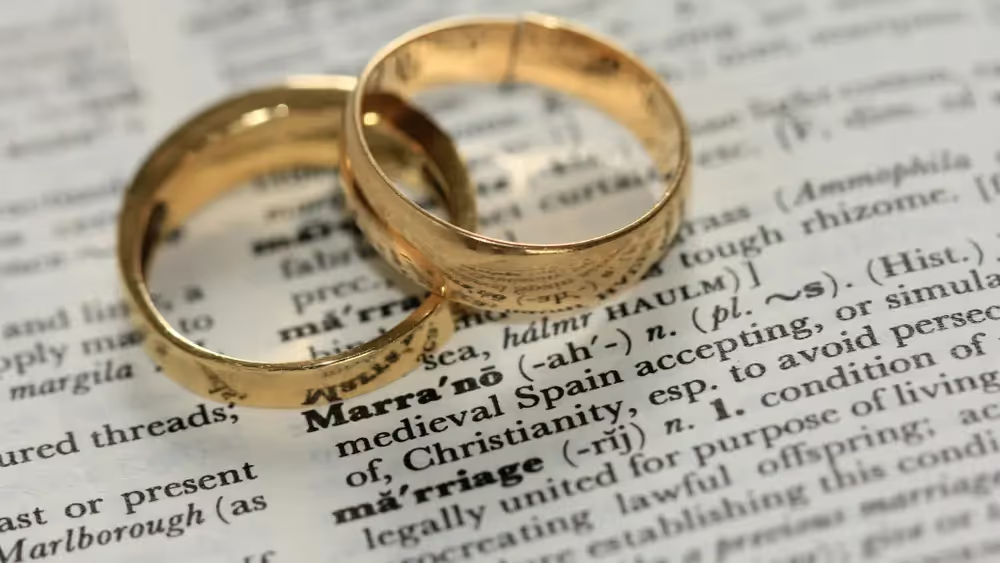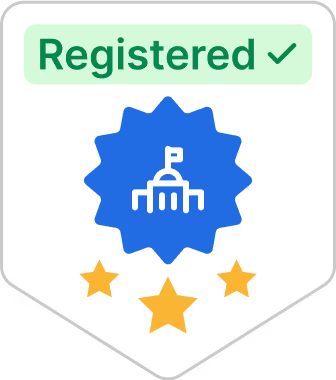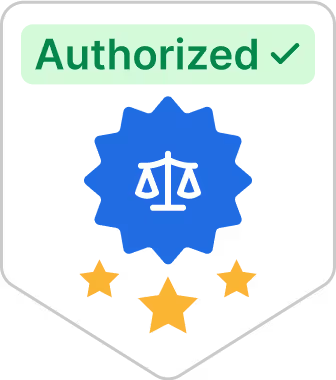How to change name after marriage

Once you’ve exchanged your vows and organized the wedding ceremony of your dreams, you may think that the only item left on your wedding checklist is to live happily ever after, right?
Not quite. If you or your spouse plan to change your maiden name, you’ll need to take one last step—and this time it’s not down the aisle.
Whether one of you is adopting the other’s name or you’ve chosen to combine your surnames, a legal name change requires you to obtain a certified copy of your marriage license or official marriage certificate, update your identification documents, and report the change to relevant agencies, such as medical offices and financial institutions. It is also important to know the answer to the question of “how much is it to change your name” before beginning the process. In this guide, we’ll explain how to change your name after marriage.
Step 1: Obtain a copy of your marriage license
While much of this process is similar to learning how to change your name legally or how to change the name on your passport, there’s one document that’s essential to a legal name change after you get married and that’s your marriage license. This vital piece of paper acts as official proof of your name change.
In most cases, you should already have a certified copy of your marriage license or certified marriage certificate. You and your spouse applied for it before your wedding and signed it shortly after the ceremony with your officiant as the witness.
Before you start taking steps to have your current last name legally changed, look over the document and make sure that it:
- Uses your new name – You probably would have noticed when you received it, but your marriage license must use your new name or names. Likewise, your signature should match.
- Is certified by the state – After you signed your marriage license, it should have been sent back to the state for certification. Most states allow 30-60 days from the time you receive your license to have it certified.
If you don’t have a copy of your official marriage certificate or it isn’t certified, contact your city or town’s clerk’s office for legal advice.
Note: If you and your spouse are looking to hyphenate your last names, you’ll have to file a court order with your county clerk.
Step 3: Update your identification documents
Everyone has a small collection of necessary documents that prove to the world who they are. When you change your surname after getting married, you need to update these documents so that they reflect your new legal name.
With your marriage license in hand, you can now go about requesting new copies of important forms of identification like:
- Your social security card – Changing your name on your social security card requires a visit to the social security office in your city. There, you’ll fill out the necessary paperwork and be asked to present your marriage license, your state ID or driver's license, a copy of your birth certificate, as well as your current social security card.
Or, save yourself the trip and request a new card using an online service.
- Your driver’s license or state ID – Bring your current driver’s license, marriage license, and proof of address to your local BMV to obtain a new driver’s license. If you’ve already received your new social security card, bring it along. Otherwise, your receipt from the social security office may suffice.
- Your passport – To update your passport with your married name, you’ll need to file a DS-5504 form with the Department of State. Again, you’ll need to show your marriage license and your current passport. You’ll also need to have a new passport photo taken.
Step 3: Update important agencies of your name change
Once you’ve updated your personal identification documents like your state ID and social security card, it’s time to notify all the banks, businesses, and other agencies that have your previous family name on file.
In the future, this will help to streamline loan requests, bills, and insurance claims.
For most people, this list will include places like:
- Financial institutions – You’ll need to update your name on any bank accounts that you hold, as well as any credit cards, investment accounts, insurance accounts, and personal loans or mortgages.
- Domestic institutions – From your electric company to your Internet provider, there are many companies associated with your home life that you must notify after changing your name. These include utility companies and other institutions that provide services for your home. If you rent your home, you’ll also want to inform your landlord so that they can make changes to your lease documents.
- Public offices and institutions – Inform your local post office of your name change. You’ll also need to update your voter registration and notify schools, alumni associations, and any other clubs or organizations you belong to.
- Medical offices – Don’t forget to update your doctor, dentist, and other healthcare providers about your name change.
- Leisure and entertainment services – All your streaming services, loyalty programs, rewards clubs, and other subscriptions should also be updated with your new name. And don’t forget about the online services you use, like social media and email accounts.
To avoid the hustle and bustle of changing your name in person, use Gov+ to get started with your name change right now online.
Sources:
- Brides.com. Marriage Certificates and Licenses: Everything to Know. https://www.brides.com/story/who-needs-to-sign-marriage-license
- Find Law. Legally Changing Your Name After Marriage. https://www.lawinfo.com/resources/family-law/marriage/legally-changing-your-name-after-marriage.html
- The Knot. How to Change Your Name After Marriage. https://www.theknot.com/content/name-change-101























